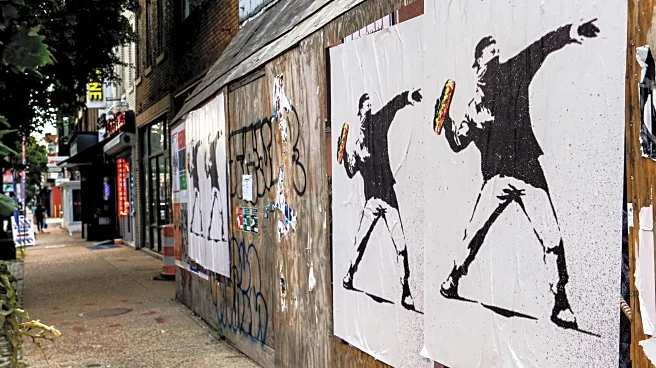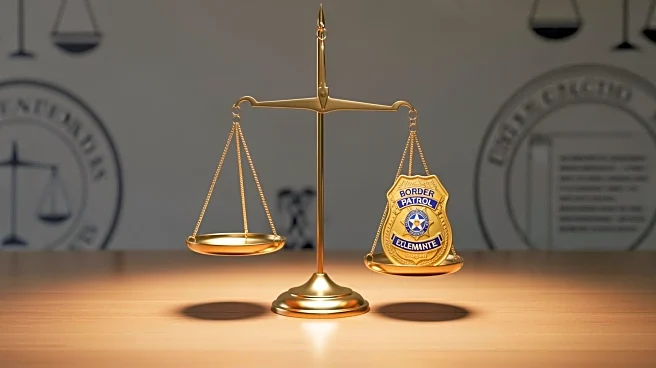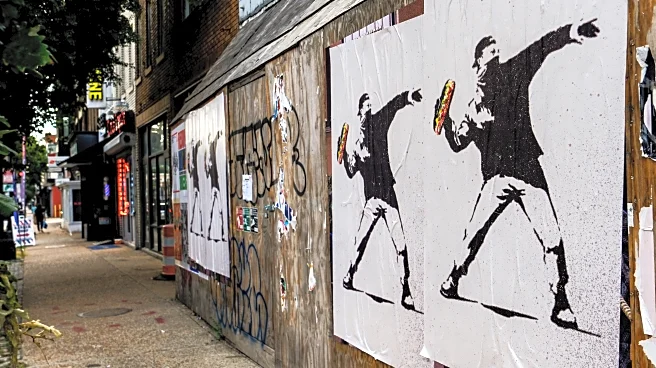What's Happening?
A Washington, D.C. man, Sean Charles Dunn, is on trial for allegedly throwing a sandwich at a federal agent during a law enforcement surge ordered by President Trump. The incident occurred on August 10,
when federal agents were patrolling a busy street corner. Dunn, angered by their presence outside a gay bar on Latin night, threw a footlong sub sandwich at Agent Gregory Lairmore, hitting him in the chest. Although the sandwich exploded upon impact, Lairmore was unharmed. Dunn is charged with assaulting or impeding a federal agent, a misdemeanor. The case has drawn attention due to its symbolic nature, reflecting tensions in the city regarding federal law enforcement actions.
Why It's Important?
The trial highlights the broader societal and political tensions in Washington, D.C. regarding federal law enforcement presence. The case underscores the challenges faced by prosecutors in securing convictions in incidents perceived as minor or symbolic protests against federal actions. Dunn's actions and subsequent trial have sparked discussions on prosecutorial overreach and the concept of jury nullification, where jurors may refuse to convict based on perceived injustice. The outcome of this trial could influence public perception of federal law enforcement and its role in local communities, potentially affecting future policy decisions and law enforcement strategies.
What's Next?
The trial is expected to conclude by the end of the week, with potential implications for how similar cases are prosecuted in the future. Dunn's defense argues that the government's response is disproportionate to the harmless nature of the act. The jury's decision could set a precedent for how minor acts of protest against federal agents are treated legally. Additionally, Dunn's likeness has become a symbol in protest banners across D.C., indicating ongoing public discourse and potential civil unrest related to federal law enforcement practices.
Beyond the Headlines
The case raises questions about the balance between maintaining law and order and respecting civil liberties. It also touches on the cultural dynamics within D.C., a city with diverse communities and varying attitudes towards federal presence. The incident and its legal proceedings may contribute to discussions on the ethical implications of law enforcement strategies and the role of public protest in shaping policy.













